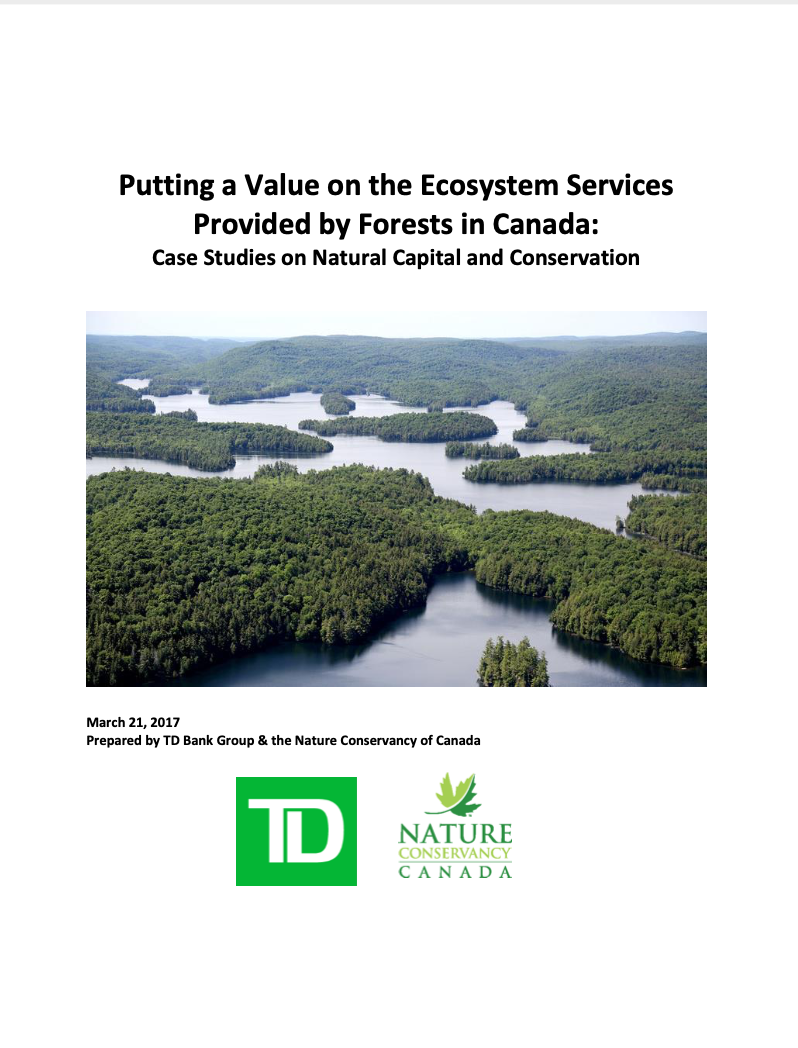Article /
Putting a Value on the Ecosystem Services Provided by Forests in Canada: Case Studies on Natural Capital and Conservation

Introduction
This resource was submitted by the Climate Risk Institute for theCanAdapt Climate Change Adaptation Community of Practice.
This article is an abridged version of the original text, which can be downloaded from the right-hand column. Please access the original text for more detail, research purposes, full references, or to quote text.
Effective conservation protects and restores nature for species, including people. Conserving natural ecosystems such as forests, wetlands and grasslands helps to protect important species and habitats and maintain essential ecological processes. Conservation also provides a benchmark to monitor future environmental change.
There has been increasing recognition of the importance of protected areas to the quality of human life (Secretariat of the Convention on Biological Diversity, 2008). In addition to conserving important habitats and species, protected areas provide important ecosystem goods and services, also known as natural capital services, such as:
- water filtration
- flood control
- pollination
- climate regulation
In the past, these ecological benefits provided by nature have been largely taken for granted. One of the challenges with traditional economic tools is that nature is often treated as an externality; a variable that cannot be accounted for. But in a world where we are losing species and ecosystems, it is ever more critical to
include nature in economic decision-making. The emerging field of natural capital valuation–which places a financial value on ecosystem goods and services–provides a framework for assigning economic values to these services.
The valuation of nature provides an opportunity to link conservation and economics. The important role of ecosystem goods and services in conservation has also beenrecognized in Canada’s biodiversity goals and targets for 2020(Government of Canada, 2015). By valuing the goods and services that nature provides, we can improve our understanding of the impacts of habitat loss and land conservation not only to nature, but to our economy and well-being. This provides decision-makers with valuable tools to support better conservation and sustainable development.
This report focuses on properties conserved by NCC through the TD Forests program to calculate the natural capital value of forests. The report includes two main parts:
-
The first part provides generalbackground on Canada’sforests and approaches to natural capital valuation.
-
The second part presents case studies for each of Canada’s eight forest regions. Each study provides an introduction to the forest region and explores the natural capital value of at least one conserved forest property.
